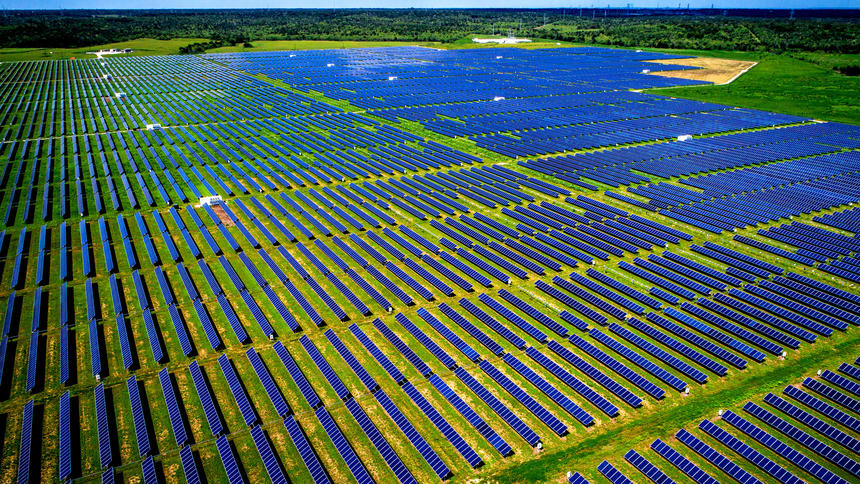Embracing renewable energy can also help companies successfully navigate potential regulatory penalties. Leading climate experts have long advocated a carbon tax as the only way to balance the cost externalities of climate change caused by business activity[5].
If implemented, this could have significant financial implications for many industries. Companies with more aggressive targets for transitioning to renewable energy are better insulated from its potential negative impact.
A 2020 CDP report on CA100+ company data notes that power company, ENEL SpA significantly reduced their Scope 1 and 2 emissions (down 50.7% between 2018-20[6]) by shifting away from coal and increasing renewables.[7] This shows the impact on GHG emissions that shifting to renewables can have.
If investors are to facilitate the transition to a decarbonised economy, we need to engage with companies and encourage them to embrace renewables as part of their emissions reduction strategies.
This involves setting firm-wide targets for renewables as percentages of overall energy consumption. We believe this will act as a catalyst for a sustainable transition to a low-carbon economy.
Case Studies
Below are some case studies of how these themes can be considered within ESG analysis:
Orsted is a Danish company that develops, constructs and operates offshore and onshore wind farms. They are the largest in the category globally and are targeting 30GW of offshore wind capacity by 2030 as they grow their footprint in North America, Continental Europe and Asia.
The business expects to add DKK15.2bn ($243m) of EBITDA between 2020 and 2023 through the growth of their renewables business, which represents a material opportunity to gain exposure to in this growing market.[8]
Microsoft is a PC hardware, software, consumer electronics and cloud computing business. The growth of their cloud computing business Azure has put pressure on their GHG emissions due to the energy demands of their data centres. Between 2017 and 2020 their scope 2 emissions/sales (emissions arising from purchased energy as a percentage of sales) rose by an average of 1% a year.[9]
Even though the business has been carbon neutral since 2012 through Renewable Energy Certificate offsets, a carbon tax could have a material negative financial impact.
This downside risk is mitigated by the business implementing an internal carbon tax of $15 per metric ton[10]. The company has also pledged to power 100% of their data centres from renewable energy by 2025, making Azure a more attractive product to clients and insulating them further from carbon related measures.
Pushing for renewable energy targets
During our engagement discussions with companies, we have encouraged them to publish targets for renewable energy as a percentage of their overall energy mix (as opposed to a discrete MW capacity target) and will continue to do so.
Examples from various sectors include:
- January 2021: Zebra Technologies Corp - mobile computing and printing technology business, US
- February 2021: Thermo Fisher Scientific - medical instruments, US
- March 2021: TJX Companies - discount retailer, US
- March 2021: Home Depot - retailer, US
Conclusion
The rapid growth of the renewables space presents both risks and opportunities for investors.
Investors should tactically take advantage of the growing market, while engaging with companies to encourage them to more fully embrace this sustainable energy source.
IMPORTANT INFORMATION
This marketing document contains information or may incorporate by reference data concerning certain collective investment schemes ("funds") which are only available for distribution in the countries where they have been registered. This document is for the exclusive use of the individual to whom it has been given and may not be either copied or transferred to third parties. In addition, this document is not intended for any person who is a citizen or resident of any jurisdiction where the publication, distribution or use of the information contained herein would be subject to any restrictions or limitations.
The contents of this document are provided for information purposes only and shall not be construed as an offer or a recommendation to subscribe for, retain or dispose of fund units, shares, investment products or strategies. Before investing in any fund or pursuing any strategy mentioned in this document, potential investors should consult the latest versions of the relevant legal documents such as, in relation to the funds, the Prospectus and, where applicable, the Key Investor Information Document (KIID) which describe in greater detail the specific risks. Moreover, potential investors are recommended to seek professional financial, legal and tax advice prior to making an investment decision. The sources of the information contained in this document are deemed reliable. However, the accuracy or completeness of the information cannot be guaranteed, and some figures may only be estimates. There is no guarantee that objectives and targets will be met by the portfolio manager.
All investment involves risks. Past performance is not indicative or a guarantee of future returns. Fund values can fall as well as rise, and investors may lose the amount of their original investment. Returns may decrease or increase as a result of currency fluctuations.
This document is issued by the following entities: in the UK: Mirabaud Asset Management Limited which is authorised and regulated by the Financial Conduct Authority under firm reference number 122140.; in Switzerland: Mirabaud Asset Management (Suisse) SA, 29, boulevard Georges-Favon, 1204 Geneva, as Swiss representative. Swiss paying agent: Mirabaud & Cie SA, 29, boulevard Georges-Favon, 1204 Geneva. In France: Mirabaud Asset Management (France) SAS., 13, avenue Hoche, 75008 Paris. In Spain: Mirabaud Asset Management (España) S.G.I.I.C., S.A.U., Calle Fortuny, 6 - 2ª Planta, 28010 Madrid. The Prospectus, the Articles of Association, the Key Investor Information Document (KIID) as well as the annual and semi-annual reports (as the case may be), of the funds may be obtained free of charge from the above-mentioned entities.


